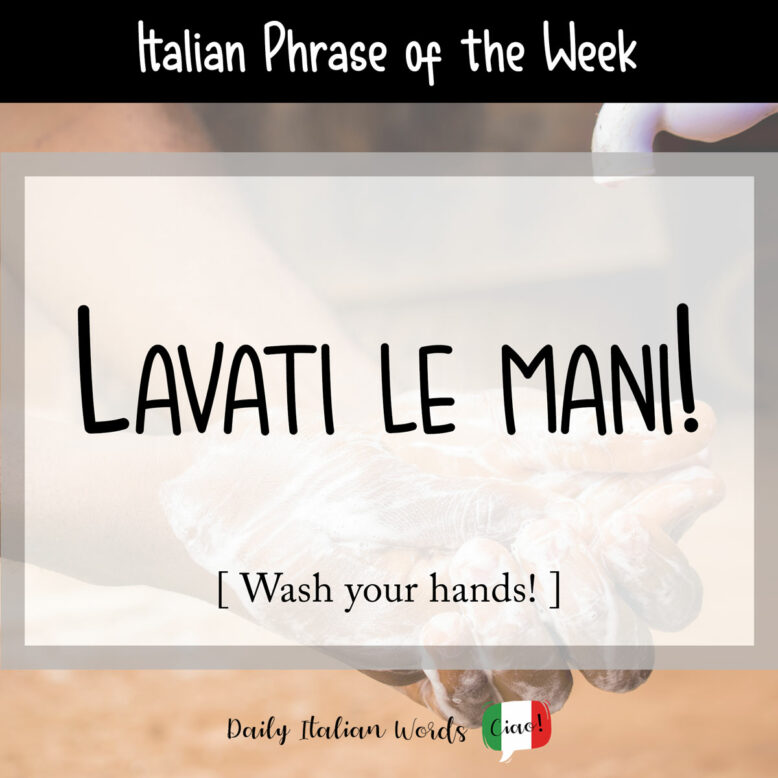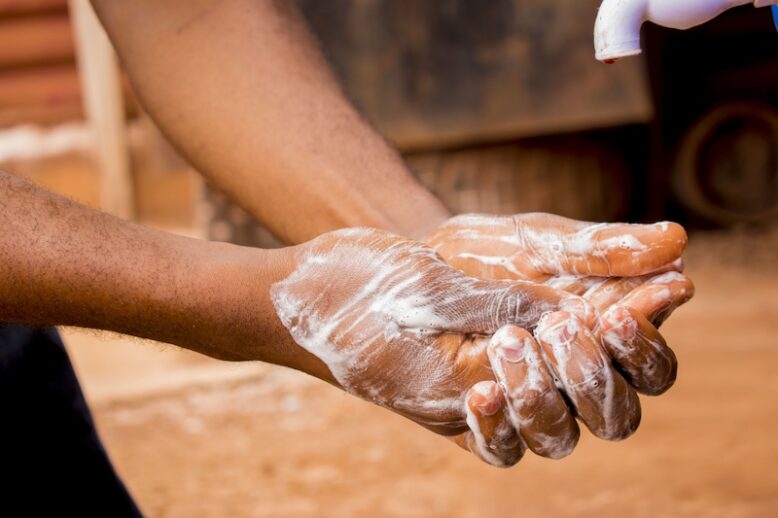Something all parents must teach their kids as they grow up is the importance of washing one’s hands, which translates as lavarsi le mani in Italian.

This clause is made up of three parts:
lavarsi (reflexive verb ‘to wash oneself‘) + le (definite article ‘the‘) + mani (‘hands‘)
Below you can see the straightforward conjugation of lavarsi le mani in the present tense for all the various personal pronouns:
(Io) mi lavo le mani
(Tu) ti lavi le mani
(Lui/lei) si lava le mani
(Noi) ci laviamo le mani
(Voi) vi lavate le mani
(Loro) si lavano le mani
I wash my hands
You wash your hands
He/she washes his/her hands
We wash our hands
You all wash your hands
They wash their hands
In order to create the command Wash your hands! however, it is necessary to transform lavarsi into the imperative tense. This would be either:
- Lavati le mani! = Wash your hands! (for an individual)
- Lavatevi le mani! = Wash your hands! (for groups)
Lavati le mani, Carlo! La cena è pronta!
Wash your hands, Carlo! Dinner is ready!

To say wash your hands well, all you have to do is insert the word bene (well) in between lavarsi and le mani as in the following example.
È importante lavarsi bene le mani per almeno 20 secondi.
It’s important to wash your hands well for at least 20 seconds.
A useful expression that Italian and English share is lavarsi le mani di qualcosa/qualcuno (to wash one’s hands of something/someone) or more simply, lavarsene le mani (to wash one’s hands of it). In both languages, it means to disclaim all responsibility for something.
Il capo si è lavato le mani di questa situazione e ora mi devo arrangiare!
The boss washed his hands of this situation and now I have to deal with it myself!
Heather Broster is a graduate with honours in linguistics from the University of Western Ontario. She is an aspiring polyglot, proficient in English and Italian, as well as Japanese, Welsh, and French to varying degrees of fluency. Originally from Toronto, Heather has resided in various countries, notably Italy for a period of six years. Her primary focus lies in the fields of language acquisition, education, and bilingual instruction.


